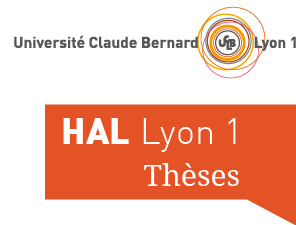Impact of multimodal MRI in the management of acute ischaemic stroke
Impact de l'IRM multimodale dans la prise en charge des AVC ischémiques à la phase aigüe
Résumé
Cerebral imaging plays a crucial role in stroke patients. The advent of mechanical thrombectomy has transformed the management of acute ischemic stroke (AIS) patients, and consequently the role of MRI in the acute phase. Here, we propose to study the contribution of multimodal MRI to the management of AIS. To this end, we have coupled the analysis of admission MRI from the HIBISCUS-STROKE (CoHort of Patients to Identify Biological and Imaging markerS of CardiovascUlar Outcomes in Stroke) cohort with functional outcome, final infarct volume and the dynamics of serum markers of inflammation. In the first part of our work, we examined the contribution of MRI to the selection of patients eligible for mechanical thrombectomy. We observed that MRI angiography techniques were inferior to cerebral arteriography in localizing intracranial occlusion, despite taking into account the migratory nature of the thrombus. We showed that the estimation of the volume of the ischemic penumbra varied substantially according to the post-processing software used, and that these differences could have an impact on the selection of patients eligible for mechanical thrombectomy. In a pilot study, we observed that the optimal parameters defining the volumes of perfusion defect varied according to the software used. In the second part of our work, we assessed the prognostic contribution of MRI in patients who had achieved successful recanalization after mechanical thrombectomy. We observed that “brush sign” was associated with >11.6mL growth in infarct volume, and that mild vascular FLAIR hypersignals were associated with poorer functional outcome at 3 months. In the third part of our work, we examined the relationships between blood-brain barrier permeability on admission MRI and neuroinflammatory response. In the total population, we showed that increased blood-brain barrier permeability was associated with greater infarct volume. In patients within 6 hours of the onset of symptoms, we observed that increased permeability was associated with larger infarct volume and higher serum levels of matrix metalloprotease 9. The HIBISCUS-STROKE cohort gave us the opportunity to assess the contribution of MRI to patient selection and prognosis, and to identify factors associated with increased blood-brain barrier permeability in the acute phase.
L'imagerie cérébrale joue un rôle crucial chez les patients victimes d'un accident vasculaire cérébral (AVC). L'avènement de la thrombectomie mécanique a bouleversé la prise en charge des patients atteints d'AVC ischémique et par conséquent la place de l'IRM à la phase aigüe. Notre travail de thèse se propose d'étudier l'apport de l'IRM multimodale dans la prise en charge de l'AVC ischémique à la phase aigüe. Dans cette perspective, nous avons couplé l'analyse des IRM d'admission de la cohorte HIBISCUS-STROKE (CoHort of Patients to Identify Biological and Imaging markerS of CardiovascUlar Outcomes in Stroke) au devenir fonctionnel, au volume final de l'infarctus et à la dynamique des marqueurs sériques de l'inflammation. Dans la première partie de notre travail, nous avons examiné l'apport de l'IRM dans la sélection des patients éligibles à une thrombectomie mécanique. Nous avons observé que les techniques d'angio-IRM étaient inférieures à l'artériographie cérébrale dans la localisation de l'occlusion intracrânienne malgré la prise en compte du caractère migratoire du thrombus. Nous avons montré que l'estimation du volume de la pénombre ischémique variait substantiellement selon le logiciel de post-traitement utilisé et que ces différences pouvaient impacter la sélection des patients éligibles à une thrombectomie mécanique. Dans une étude pilote, nous avons observé que les paramètres optimaux définissant le trouble de perfusion variaient selon le logiciel utilisé. Dans la deuxième partie de notre travail, nous avons évalué l'apport pronostic de l'IRM chez les patients ayant bénéficié d'une recanalisation efficace après thrombectomie mécanique. Nous avons observé que le « brush sign » était associé à une croissance >11.6mL du volume de l'infarctus et que des hypersignaux FLAIR vasculaires peu étendus étaient associés à un moins bon résultat fonctionnel à 3 mois. Dans la troisième partie de notre travail, nous avons examiné les relations entre la perméabilité de la barrière hémato-encéphalique sur l'IRM d'admission et la réponse neuroinflammatoire. Sur la population totale, nous avons montré qu'une perméabilité accrue de la barrière hémato-encéphalique était associée à un volume plus important de l'infarctus sur la population totale. Chez les patients à moins de 6h du début des symptômes, nous avons observé qu'une perméabilité accrue était associée à un volume plus important de l'infarctus et à des taux sériques plus importants de métalloprotéase matricielle 9. La cohorte HIBISCUS-STROKE nous a donc permis de préciser l'apport de l'IRM dans la sélection et le pronostic des patients et d'identifier les facteurs associés à une augmentation de la perméabilité de la barrière hémato-encéphalique à la phase aigüe.
| Origine | Version validée par le jury (STAR) |
|---|
